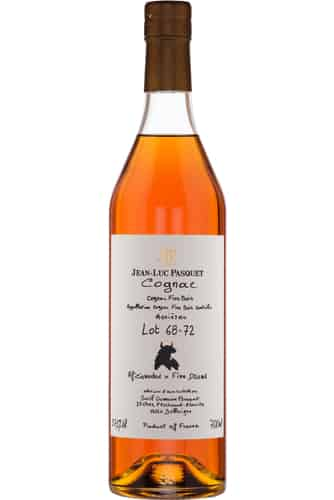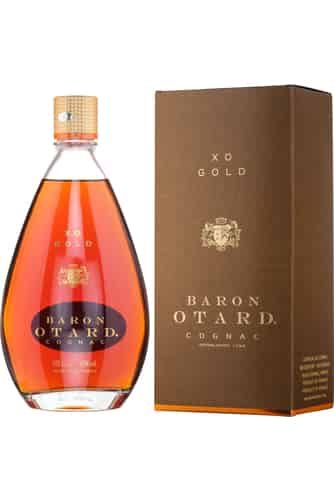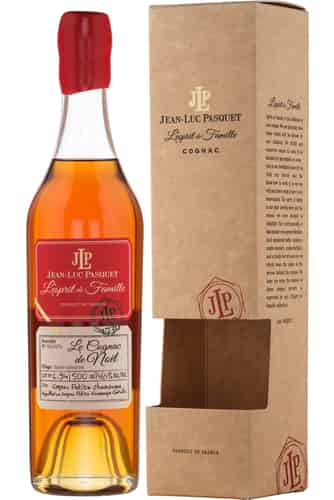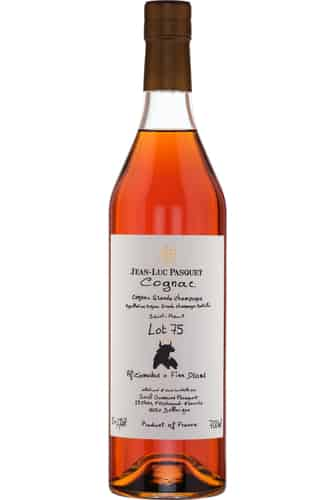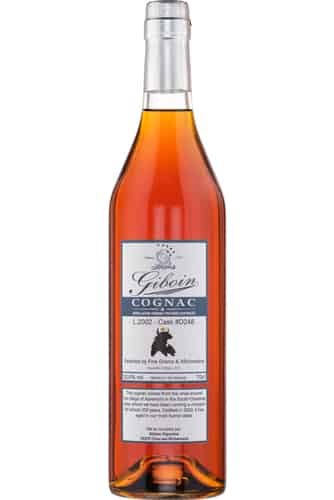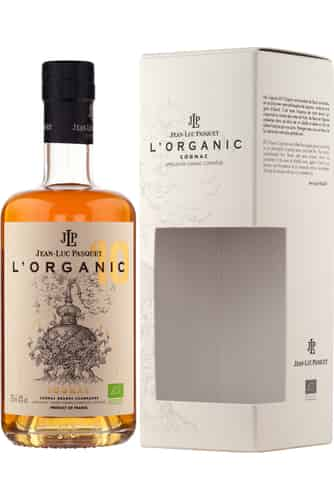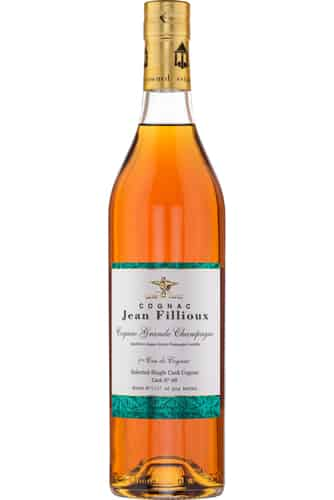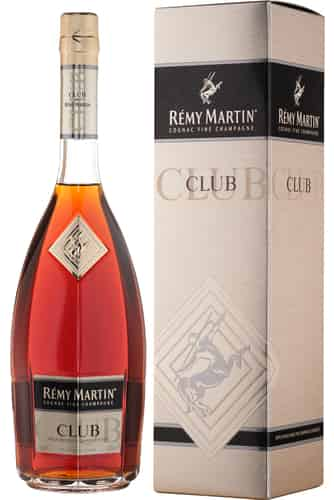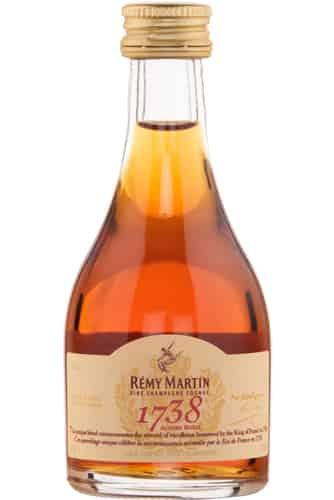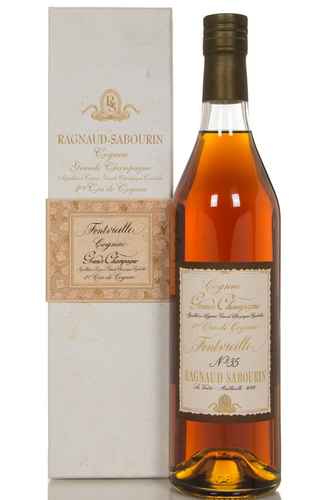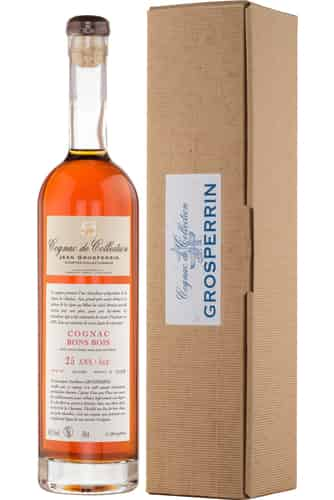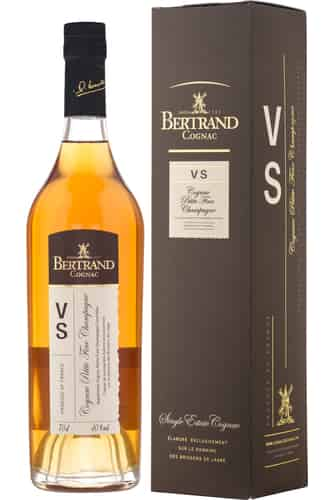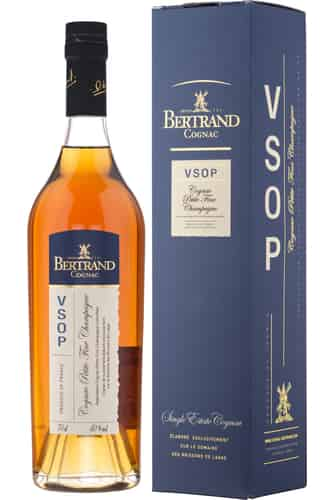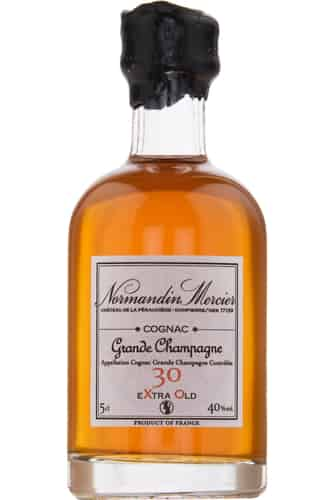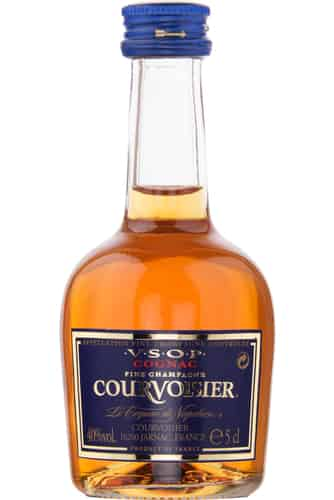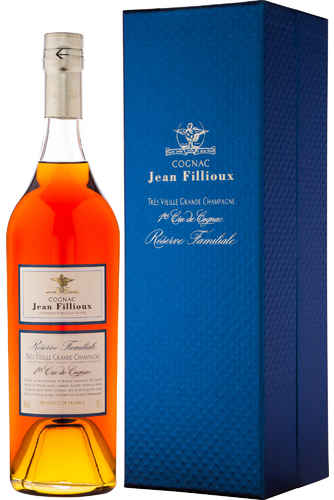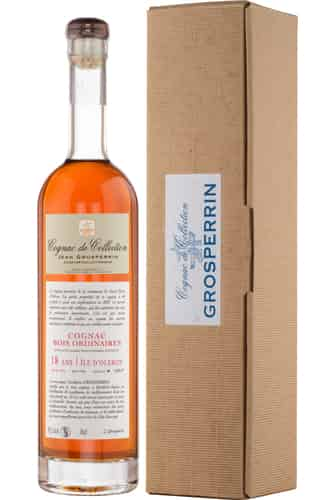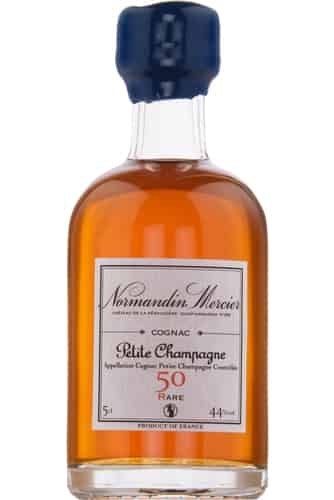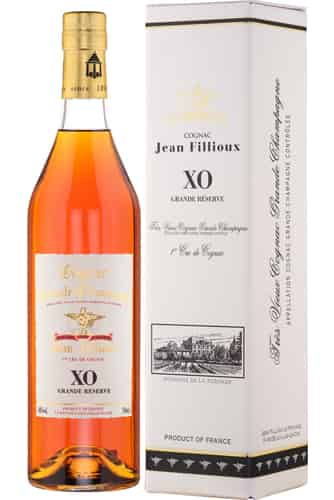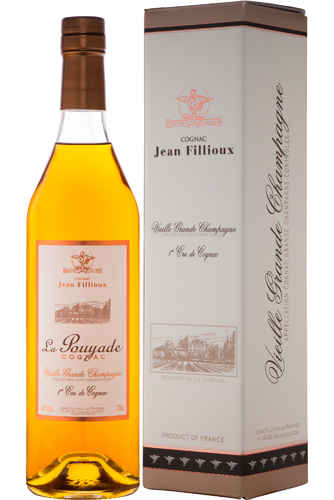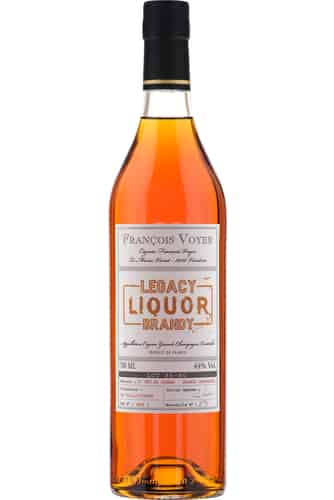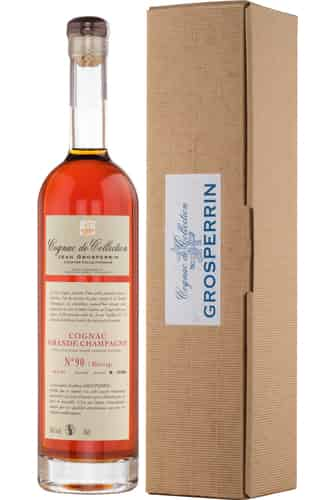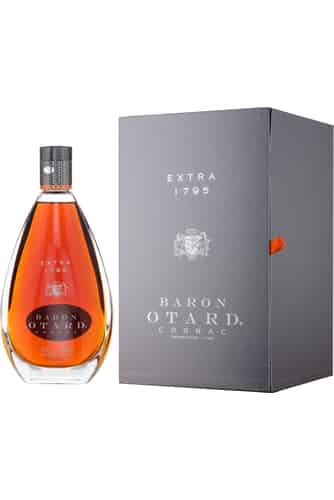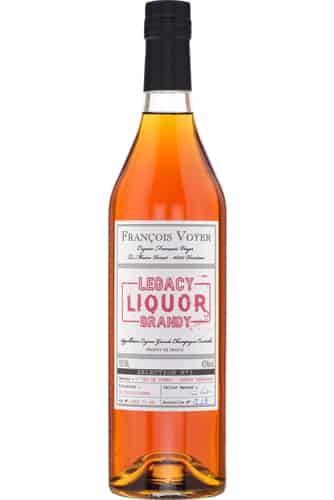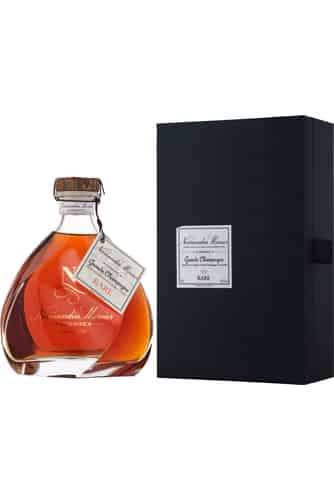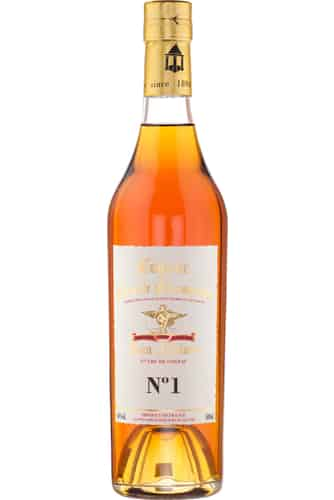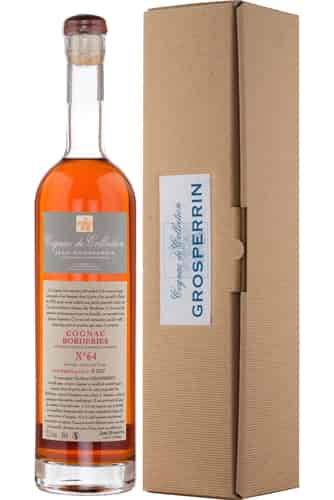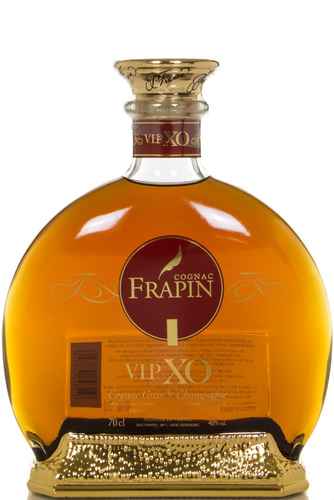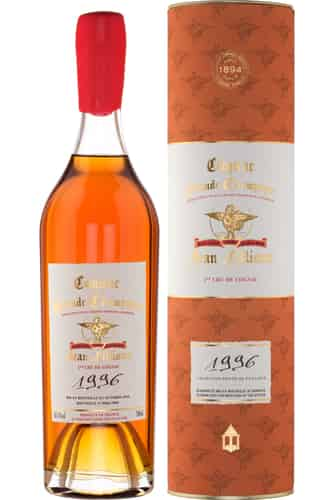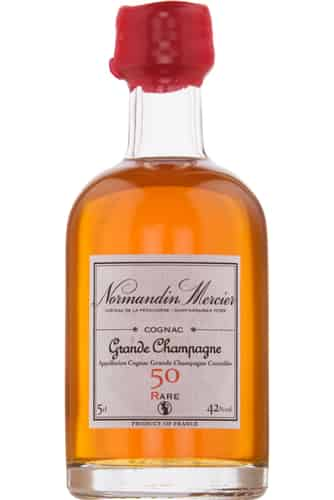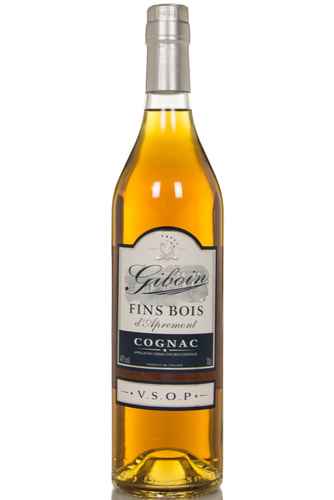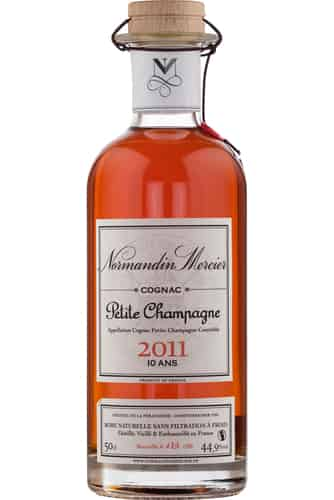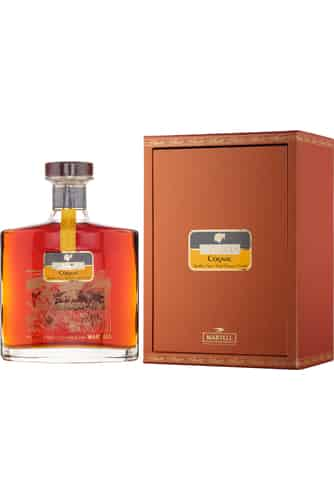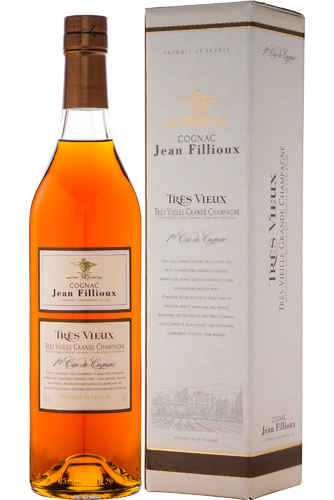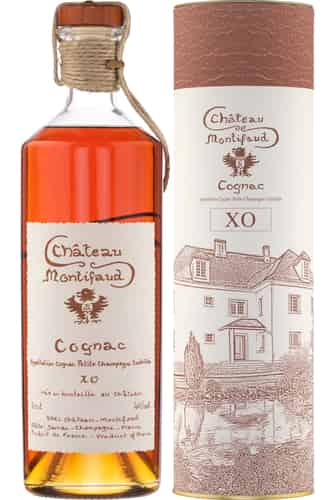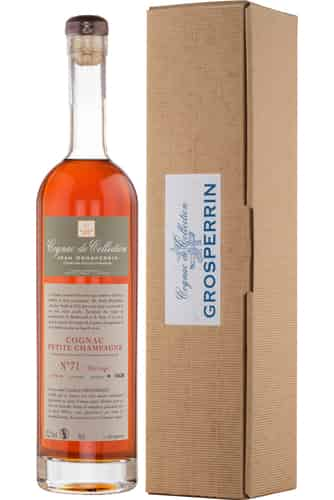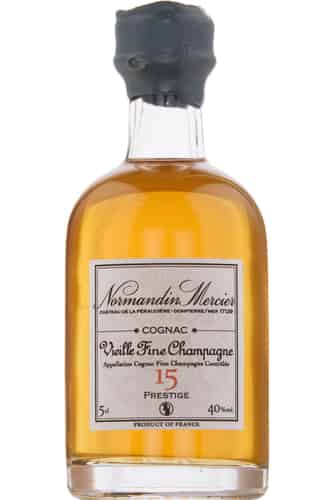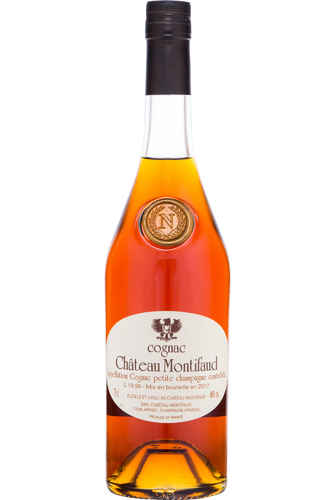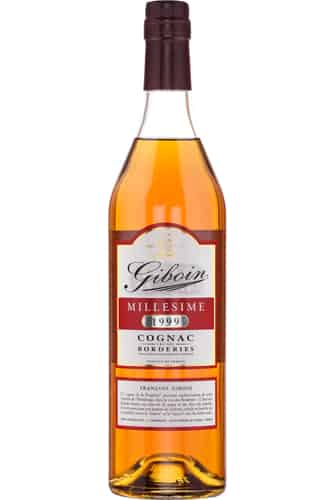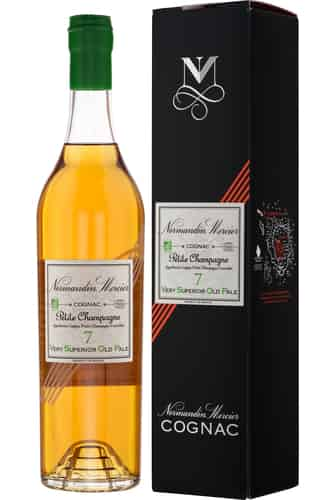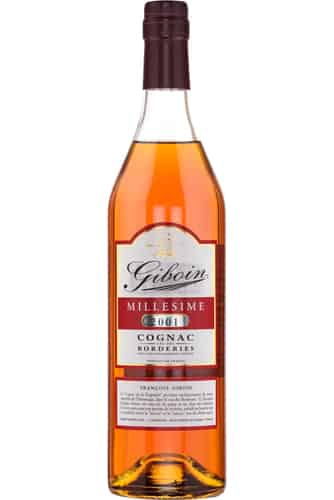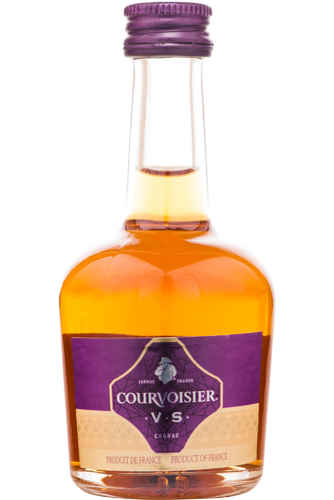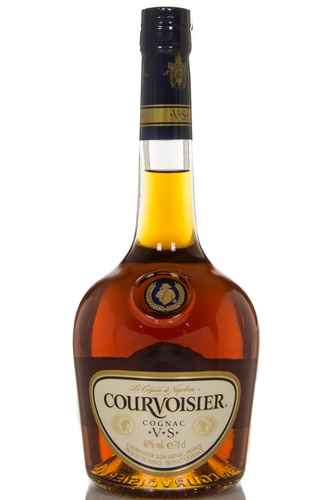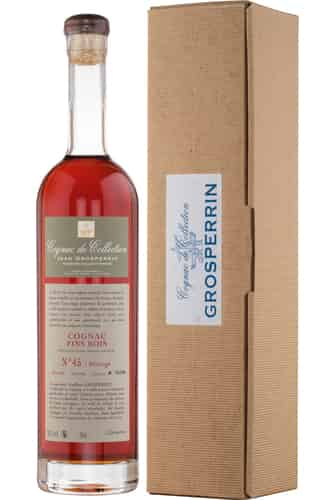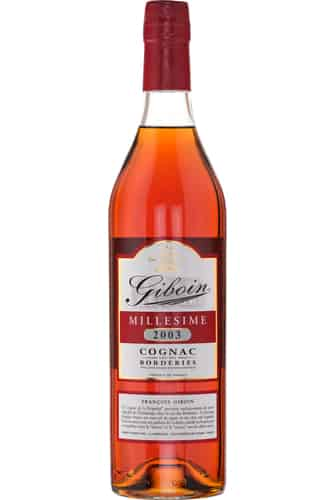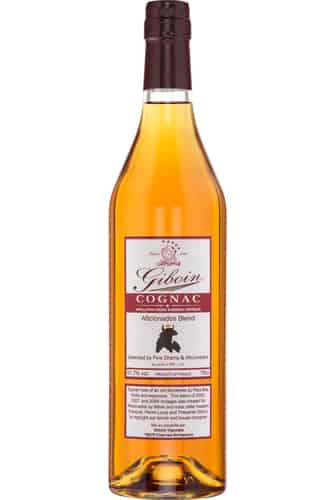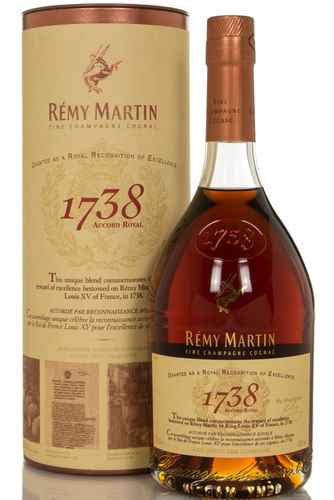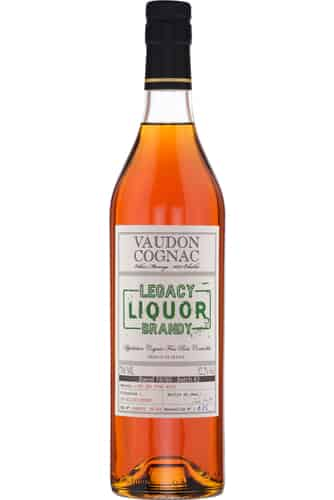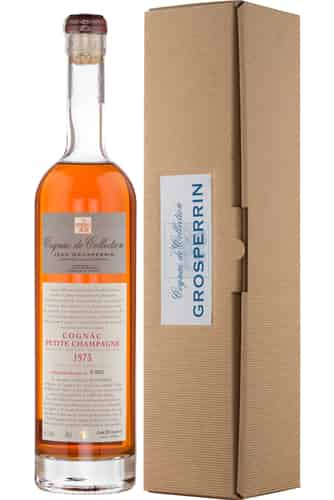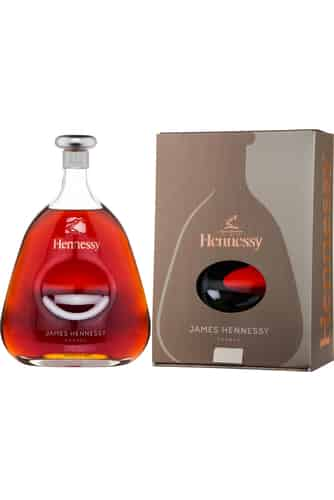
Hennessy James (1 Liter)
100 cl, 40%In stock175.20 €
Grosperrin N°72 Grande Champagne Cognac - Aficionados x Fine Drams
70 cl, 56.1%In stock215.20 €- Save
20.80 €![]()
Jean-Luc Pasquet Lot 70 Cognac - Aficionados x Fine Drams
70 cl, 52.1%In stock188.80 €209.60 € ![]()
Jean-Luc Pasquet Lot 68-72 Cognac - Aficionados x Fine Drams
70 cl, 57.1%In stock221.60 €- Save
24.00 €![]()
Baron Otard XO Gold (1 Liter)
100 cl, 40%In stock135.20 €159.20 € ![]()
Jean-Luc Pasquet Lot 94 Le Cognac de Noël - Trésors de Famille
50 cl, 46.4%In stock78.40 €![]()
Jean-Luc Pasquet Lot 90's Le Cognac d'Eraville - Confluences
50 cl, 42.8%In stock68.00 €- Save
20.00 €![]()
Jean-Luc Pasquet Lot 75 Cognac - Aficionados x Fine Drams
70 cl, 54.2%In stock184.00 €204.00 € ![]()
Giboin 2002 Fins Bois Cognac - Aficionados x Fine Drams
70 cl, 52.6%In stock74.40 €![]()
Jean-Luc Pasquet L'Organic 10 Cognac
70 cl, 40%In stock52.80 €![]()
Jean Fillioux Grande Champagne Single Cask No. 88
70 cl, 43%In stock73.60 €![]()
Remy Martin Club (1 Liter)
100 cl, 40%In stock103.20 €![]()
Rémy Martin 1738 Accord Royal Cognac Miniature
5 cl, 40%In stock7.20 €![]()
Ragnaud-Sabourin No.35 Fontvieille Cognac
70 cl, 43%In stock151.20 €![]()
Grosperrin 25 Year Old Bons Bois Cognac (Lot N°1071)
70 cl, 46.5%In stock83.20 €![]()
Bertrand VS Cognac
70 cl, 40%In stock28.00 €![]()
Bertrand VSOP Cognac
70 cl, 40%In stock40.00 €![]()
Frapin Miniature Set - 2 x 5 cl
10 cl, 40%In stock16.00 €![]()
Normandin-Mercier XO Grande Champagne Cognac Miniature
5 cl, 40%In stock12.00 €![]()
Courvoisier VSOP Cognac Miniature
5 cl, 40%In stock4.00 €![]()
Grosperrin Frédéric Mestreau VSOP Cognac
70 cl, 40%In stock42.40 €![]()
Meukow Palme D'Or Rarissime Cognac
70 cl, 41.3%In stock279.20 €![]()
Jean Fillioux Réserve Familiale Cognac
70 cl, 40%In stock223.20 €![]()
Meukow VS Cognac
70 cl, 40%In stock31.20 €![]()
Grosperrin 18 Year Old Bois Ordinaires Île d'Oléron Cognac (Lot N°1014)
70 cl, 50.1%In stock75.20 €![]()
Normandin-Mercier Rare Petite Champagne Cognac Miniature
5 cl, 44%In stock27.20 €![]()
Jean Fillioux XO Grande Réserve
70 cl, 44%In stock87.20 €![]()
Jean Fillioux La Pouyade Cognac
70 cl, 42%In stock50.40 €![]()
François Voyer Lot 35-80 - Legacy Brandy
70 cl, 44%In stock348.80 €- Save
16.00 €![]()
Grosperrin N°90 Grande Champagne Cognac (Lot N°932)
70 cl, 54.8%In stock140.80 €156.80 € - Save
24.80 €![]()
François Voyer 20-50 Year Old - Legacy Brandy
70 cl, 44%In stock139.20 €164.00 € ![]()
Baron Otard Extra 1795
70 cl, 40%In stock319.20 €- Save
20.00 €![]()
François Voyer Lot 71-88 - Legacy Brandy
70 cl, 43%In stock116.00 €136.00 € ![]()
Normandin-Mercier Rare Grande Champagne Cognac
70 cl, 42%In stock279.20 €![]()
Jean Fillioux No.1 Confidential
50 cl, 46%In stock151.20 €- Save
24.00 €![]()
Grosperrin N°64 Borderies Cognac (Lot N°562)
70 cl, 52.1%In stock271.20 €295.20 € ![]()
Frapin VIP XO Cognac
70 cl, 40%In stock143.20 €![]()
Jean Fillioux 1996 (Bottled 2023)
70 cl, 43.1%In stock104.00 €![]()
Normandin-Mercier Rare Grande Champagne Cognac Miniature
5 cl, 42%In stock28.00 €![]()
Giboin VSOP Fins Bois Cognac
70 cl, 40%In stock28.00 €![]()
Normandin-Mercier Millésime 2011 Petite Champagne Cognac
50 cl, 44.9%In stock60.00 €![]()
Martell Cohiba Extra
70 cl, 43%In stock431.20 €![]()
Jean Fillioux Très Vieux Cognac
70 cl, 40%In stock76.80 €![]()
Château de Montifaud XO Millenium Cognac
70 cl, 40%In stock92.00 €- Save
24.00 €![]()
Grosperrin N°71 Petite Champagne Cognac (Lot N°934)
70 cl, 52.2%In stock231.20 €255.20 € ![]()
Normandin-Mercier Vieille Fine Champagne Cognac Miniature
5 cl, 40%In stock8.80 €![]()
Château de Montifaud Napoléon Cognac
70 cl, 40%In stock45.60 €![]()
Giboin Millesime 1999 Cognac (46.5%)
70 cl, 46.5%In stock61.60 €![]()
Normandin-Mercier VSOP Petite Champagne Organic Cognac
70 cl, 41.5%In stock44.00 €![]()
Giboin Millesime 2001 Cognac (53.6%)
70 cl, 53.6%In stock65.60 €![]()
Courvoisier VS Cognac Miniature
5 cl, 40%In stock2.80 €![]()
Courvoisier VS Cognac
70 cl, 40%In stock32.00 €- Save
48.00 €![]()
Grosperrin N°45 Fins Bois Héritages Cognac (Lot N°816)
70 cl, 50.8%In stock399.20 €447.20 € ![]()
Giboin 2003 Borderies Cognac (45.7%)
70 cl, 45.7%In stock59.20 €![]()
Giboin 2005 - 2007 - 2009 Borderies Cognac - Aficionados x Fine Drams
70 cl, 57.7%In stock79.20 €![]()
Rémy Martin 1738 Accord Royal Cognac
70 cl, 40%In stock63.20 €- Save
34.40 €![]()
Normandin-Mercier Lot 80 Grande Champagne Cognac (Cask #3711) - Legacy Brandy
70 cl, 52.3%In stock192.00 €226.40 € ![]()
Normandin-Mercier Millésime 1976 Petite Champagne Cognac
50 cl, 41.4%In stock279.20 €- Save
20.00 €![]()
Vaudon Lot 78/80 - Legacy Brandy
70 cl, 52.2%In stock117.60 €137.60 € - Save
24.00 €![]()
Grosperrin 1973 Petite Champagne Cognac (Lot N°474)
70 cl, 60.3%In stock263.20 €287.20 €
Sorry, we didn't find anything. Please try changing your search criteria.
Cognac History
Cognac has historically been recognised the premier artisan spirit in the world with well earned reputation for quality that is the envy of the distilling world. Cognac is typified by fruity, intense flavours, staggering balance and complexity, yet it is a spirit of enormous variety, with different distilleries offering very different products.
The term brandy is a corruption of the Dutch word “brandewijn” meaning “burned wine”, and is a spirit produced by distilling wine. Whilst the famous classifications are in English (despite the French origin of the spirit) due to the spirit’s popularity in English high society during the 18th and 19th centuries, a fact that demonstrates Cognac’s lasting and widespread fame.
Many brandies are produced around the world, yet by far the two most famous are Cognac, and Armagnac, both produced in France. Cognac is widely recognised as the finest brandy available, and differs from Armagnac in that it is twice distilled. The spirit takes its name from the town of Cognac in the far west of France. This town is home to many of the great Cognac houses of the industry: Martell, Hine, Remy-Martin, Hennessy, to name but a few. Some families, such as Frapin, have been operating in the region since the 13th century.
Cognac is produced using different varieties of grapes, though Ugni Blanc is by far the most popular. Rather, grapes tend to be classified by their “Cru”, a regional sorting system that rings around the town of Cognac, with those more central being valued highest. These regions are very regulated and tautly defined, ensuring that the consumer is aware of the quality of the spirit. Cognac grapes differ quite drastically from wine grapes, however, with Cognac grapes proving far more bitter and acidic than their vinous relatives, meaning that whilst French wine may enjoy a good season, Cognac may not, and vice versa.
All Cognac is aged in Limousin Oak casks, and age of maturation is bound by strict rules through classifications. Very Special (VS) Cognac can contain brandy no younger than 2 years old, whilst Very Superior Old Pale (VSOP) can contain brandy no younger than 4 years old, and the highest classification Extra Old (XO) cannot contain brandy younger than 10 years old (rising from 6 years due to a 2016 law change). There is a further classification: Hors d’Âge, or Vintage, which is effectively an extension of the XO category, but allows producers to illustrate that these Cognac is of extreme age.
Cognac has been at the top of the spirits world for nearly three centuries, and during this history has been the toast of kings, inventors and revolutionaries alike. It formed the basis for many of the classic cocktails that remain on menus around the globe to this day, and is truly a magnificent and delicious spirit that every drinker of discernment should sample.
Timeline
Early cognac history is tied closely to the history of French wine.
-
1st Century AD
Roman Emperor Titus Flavius Domitianus bans the practice of wine making.
-
3rd Century AD
Marcus Aurelius Probus, another Roman Emperor lifts the ban, and wine begins to be made again in the South-West of France.
-
1200s
The Duke of Guyenne and Poitiers Guillaume X., orders the planting of vineyards in the Charente region, where the town of Cognac is found.
-
1207
Travelling merchants from England arrive at La Rochelle, the closest major seaport to Cognac to buy and sell wine.
-
1270
Wine from the Cognac region is sold in Hamburg markets.
-
1300s
The Frapin family, who would later establish one of Cognac’s finest distilleries, first settle in the Cognac region.
-
1337
Cognac wine is exported heavily to Britain as the 100 years war begins between France and England.
-
1411
Brandy is distilled in the Armagnac region by farmers as a means of using up surplus grapes.
-
1494
François I, an important figure in Cognac’s history, is born in the town. He later became king of France, and allowed trade along the Charente region’s rivers.
-
1500s
Merchants from Holland purchase wine from what would now be called the Borderies and Champagne Crus. After realising the wine would often spoil on the return journey, they began to distil it to a spirit as a means of reducing bulk and preserving the stock. This was known as a Brandwijn, or “Burnt Wine”, which gave rise to the name “Brandy”. Once back in Holland however, water was added to return the liquid to a wine-like proof, it was rarely drank neat. It was around this time that the first effects of oak barrels on the brandy were noticed.
At the start of this century, famed German alchemist and botanist published Liber de Arte Destillandi, a key text on the art of distilling.
-
1549
Brandy is made in Cognac for the first time, reported by André Castelo, a chronicler, who states that a merchant from La Rochelle came to the town and produced 4 casks of good distilled spirit.
-
1559
The Aunis region is producing far more wine than there is demand, meaning that the Dutch merchants are distilling the excess amount down to a spirit. The word Brandy appears for the first time.
-
1571
The second occurrence of an eau-de-vie being made in Cognac town, with a purchase by a Mr. Serazin noted.
-
1600s
The practice of double distillation is experimented by wine merchants for the first time, initially to further reduce the volume of liquid for easy transportation and more available room on ships.
The Cognac Houses have a different, less accurate, yet more romantic story about how double distillation was first invented. The legend has it that the knight Jacques de la Croix Maron, the Lord of Segonzac, dreamt the Devil tried to damn his soul by boiling it in a huge cauldron. Yet, the knight’s faith was so strong, that the Devil had to boil it a second time. Terrifying stuff, never the less, the knight was inspired to apply the same principle to his eaux-de-vie, creating the double distillation process.
-
1624
A distillery is founded by two Dutchmen, Van Der Boogwert and Loo Deyijck, in Tonnay-Charente, near Cognac.
-
1636
Riots occur in protest of the high rate of tax on wine, which meant that production and retail was extremely difficult.
-
1638
British merchant Lewes Roberts mentions a wine known as “Rotchell or Cogniacke.”
-
1643
Wine-maker Philippe Augier founds Augier cognac house, which later becomes Augier Frères.
-
1678
The London Gazette mentions, for the first time, “Cogniack” Brandy.
-
1696
Louis XIV gives the house of Frapin an aristocratic status.
-
1700s
Trading houses are created which sell eaux-de-vie to sell to buyers in England, Holland and beyond in Europe.
-
1709
Large parts of the vineyards in Saintonge are deverstated by a cold winter.
-
1710
Claude Masses claims this is the year that double distillation was first invented, by a man in La Rochelle.
-
1715
Channel Islander Jean Martell founds Martell Cognac, one of the most well renown distilleries in the region.
-
1724
Paul-Emilie Rémy Martin alongside his father Jean Geay found Rémy Martin.
-
1725
Isaac Ranson starts a trading house in Cognac, shipping eaux-de-vie to Holland and Ireland.
-
1731
Louis XV bans the planting of new vineyards without prior permission.
-
1742
Exports of Cognac rise considerably.
-
1762
At Ransom & Delamain in Jarnac, James Delamain (an Irishman) rises to the position of partner in the firm.
-
1765
Richard Hennessy, Irishman and former army officer, founds Hennessy Cognac.
-
1779
In the centre of Cognac there are now ten trading houses selling the spirit around Europe.
-
1783
Limousin oak casks have become the standard barrel.
-
1794
Hennessy begins exporting Cognac brandy to Northern America, particularly New York.
-
1795
Hennessy marries Martha Martell, meanwhile the Baron Jean-Baptiste Antione Otard with Jean Dupuy found the distillery Cognac Otard, as the spirits popularity continues to rise.
-
1797
Just as other distilling families in Cognac have entwined, Thomas Hine and Elisabeth Delamain marry.
-
1800s
By this century cognac had stopped being sold by the barrel, but in bottles which are smaller, and more affordable for the customer. This leads to the creation of a side industry- that of bottle and cork making. The end of this century would spell disaster for the brandy industry as blight destroys most of the vineyards in Cognac.
-
1809
Emmanuel Courvoisier begins selling wine and spirits in the suburb of Bercy in Paris, alongside Louis Gallois the mayor of Bercy at the time. At this point they merely sold the product.
-
1811
Napoleon Bonaparte visits the Courvoisier warehouses in Bercy in 1811, and later demanded that his military forces have a ration of Cognac.
-
1815
Napoleon is exiled to St. Helena, taking with him several casks of Cognac from Courvoisier’s warehouses, which first gave rise to the term “Napoleon Brandy.”
-
1817
Thomas Hine & Co. Cognac is founded. The first classifications appear as VOP (Very Old Pale) and VSOP (Very Superior Old Pale).
-
1819
Alecandre Bisquit founds Bisquit cognac.
-
1824
Roullet & Delamain cognac house is founded in Jarnac by Henri Delamain and cousin Paul Roullet.
-
1828
Felix Courvoisier and Jules Gallois, the sons of founders Emmanuel and Louis wanted to ensure a constant supply of premium spirit, and thus moved the company to Jarnac, nearby to Cognac.
-
1833
King Louis Phillipe first purchases a barrel of Pineau de Charentes, an aperitif created with a small amount of Cognac.
-
1840s
Courvoisier moves into a magnificent Château on the banks Charente. This remains their global headquarters.
-
1848
Alfred de Vigny, famous poet and translator of Shakespeare begins to produce his own Cognac.
-
1849
Martell becomes the first Cognac house to label its bottles.
-
1850
For the first time, Cognac is shipped to Australian shores.
The Sazerac cocktail, one of the finest in the world, is first invented in New Orleans, using Cognac as the base spirit.
-
1854
The first “Crus” appear, as the Cognac regions are mapped, they are named: Grande Champagne, Petit Champagne, Premier Bois and Deuxième Bois.
-
1855/56
Hennessy starts to produce and label bottles.
-
1858
A.E. Dor Cognac House is founded in Jarnac.
-
1861
For the first time, Martell ships its spirit to Shanghai in China.
-
1863
Jean-Baptisite Camus founds the Camus Cognac House.
-
1864
The iconic Hennessy axe-in-hand logo is registered as a trademark, as is the brand name.
-
1865
A year later, Hennessy begins to use a star classification system for its brandies.
-
1869
Napoleon’s heir, Napoleon III requested Courvoisier supply him with Cognac.
-
1870
A new map of the Cognac region emerges with the zones of Fins Bois and Bons Bois added.
-
1872
Phylloxera rears its ugly head in the Cognac region, destroying much of the grape crop and Cognac’s hold on the spirits industry, as the Whisky market booms in response.
-
1876
Courvoisier labels its bottles for the first time.
-
1877
The size of vineyards in the Cognac region is estimated at 300,000 hectares.
-
1878
Resident of Cognac Claude Boucher, creates a new machine to make bottles, ensuring a more consistent solidity and regularity of structure.
-
1889
Gold medals are awarded to Frapin and Courvoisier for their spirits at the 1889 Paris World Exposition.
-
1890
Having stood at 300,000 hectares merely 13 years previously, the vineyards now only occupied 40,000 hectares of land, due to the full bite of the grape blight.
Hennessy is established as world market leader in the Cognac industry.
-
1909
The six regions of Cognac become defined and protected by law.
-
1920s
The golden age of cocktails sees Cognac based cocktails extremely popular.
-
1923
Hennessy and Martell exchange tips about export markets, with the agreement lasting until 1952.
-
1927
The term ‘Fine Champagne’ is first used on bottles of Rémy Martin VSOP.
-
1934
Courvoisier first use Napoleon in their marketing.
-
1936
Stricter rules about the production of Cognac are introduced: no sugar may be added during production, and the wine distilled must be made out of white grapes. In response to the blight, grape vines have been imported from America, with Ugni Blanc replacing Folle Blanch and Colombard as the most popular variety used.
-
1945
African-American soldiers were stationed in South-West France during and immediately after the Second World War, gaining a taste for Cognac, which they brought back to America. Earlier in the century, black performers such as Josephine Baker enjoyed Cognac, the beginning of a long association between black American musicians and the spirit- a connection that would work in Cognac’s favour at the end of the century. Indeed, Jazz, and other black art-forms were appreciated in France before America, and thus for African-Americans this was the spirit of a nation that admired their culture rather than admonishing it. Considering that bourbon, the national spirit of the States, appealed to Confederate sensibilities and nationalism, and that many distilleries were founded with slave labour, it is no surprise that many in the black community preferred cognac.
-
1946
The Bureau National Interprofessionel de Cognac is founded. Known as the BNIC, this is the governing body for Cognac, but also representing the spirit’s interest on a national scale.
-
1960
Courvoisier is the first cognac to advertise on television.
-
1964
Courvoisier is bought by the Canadian drinks giants Hiriam-Walker.
-
1967
Pernod Ricard buys Bisquit Cognac.
-
1971
Hennessy and Moet-Chandon join forces to become Moet-Hennessy. Meanwhile, Hine is purchased by The Distillers Limited.
-
1983
Courvoisier receives the Prestige de la France award, the highest accolade of French quality, and remains the only Cognac house to be given this prestigious honour.
-
1986
Courvoisier changes hands again, having been bought by Allied Domecq.
-
1987
The one of the world’s largest luxury goods companies is formed when Louis Vuitton merges with Moet-Hennessy, creating Louis Vuitton Moet-Hennessy, or LVMH as it is known.
-
1988
Seagram purchases Martell.
-
1990s
This decade saw an upturn in the fortunes of Cognac, after suffering during the Tequila and Vodka booms of the 70s and 80s. This was thanks in no small part to the references to the spirit by rappers such as the Notorious B.I.G., Tupac and Busta Rhymes.
-
1993
Over 87,000 hectares of vineyards exist in Cognac.
-
2001
Pernod Ricard buys Seagram with Diageo, and thus acquires Martell. Meanwhile Hennessy breaks the record for highest sales in a year, with 35 million bottles.
-
2005
Moet Hennessy wins a landmark trial against counterfeit Cognac in China.
-
2008
LVMH buys a majority stake in Wenjun Distillery, one of China’s top brandy producers.
-
2010
China is Hennessy’s largest market.
-
2011
Hennessy announces that it will plant a vineyard in China in a partnership with the state agricultural company, demonstrating how the spirit has gone from provincial farm industry, to world-wide powerhouse.



